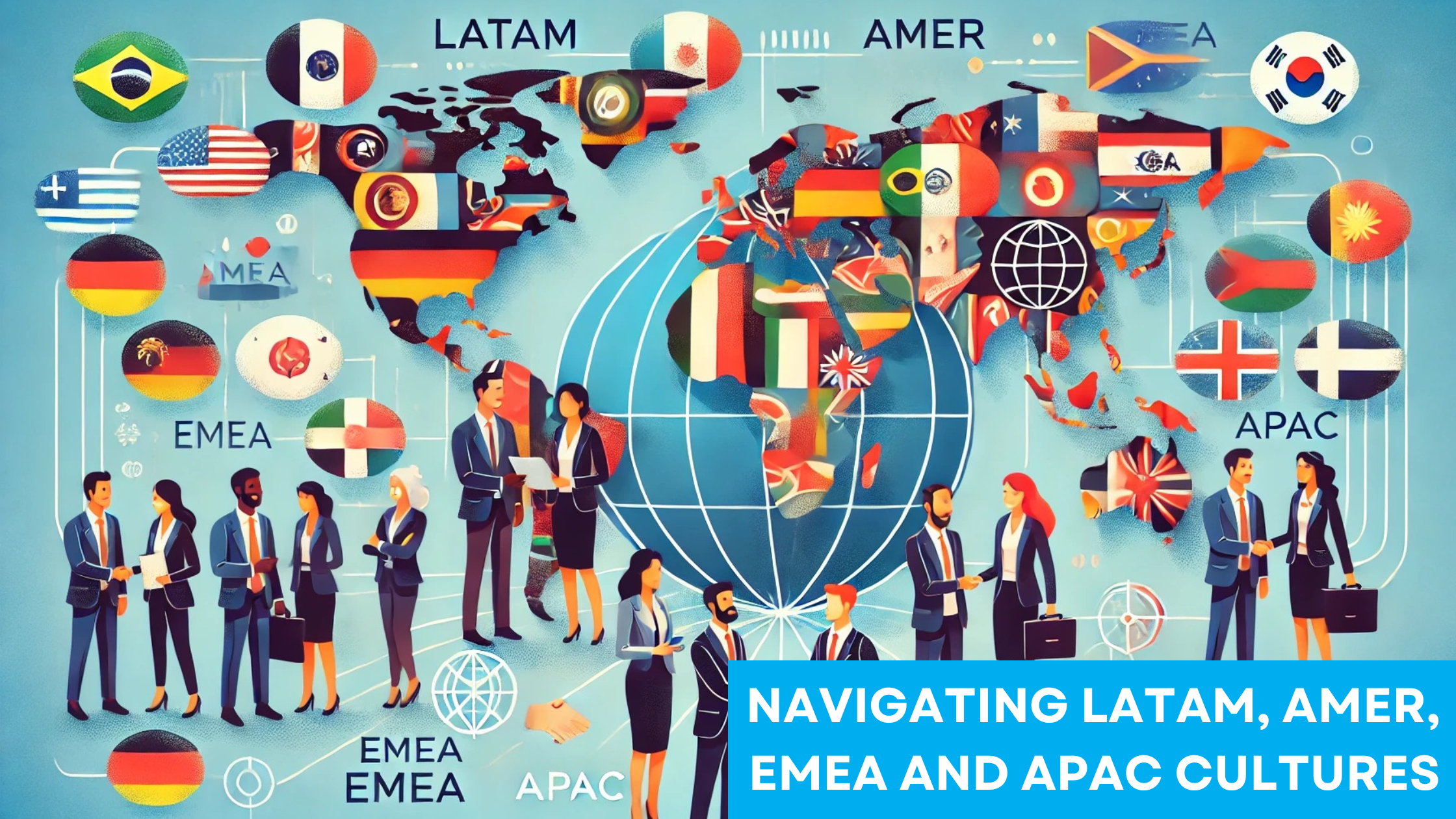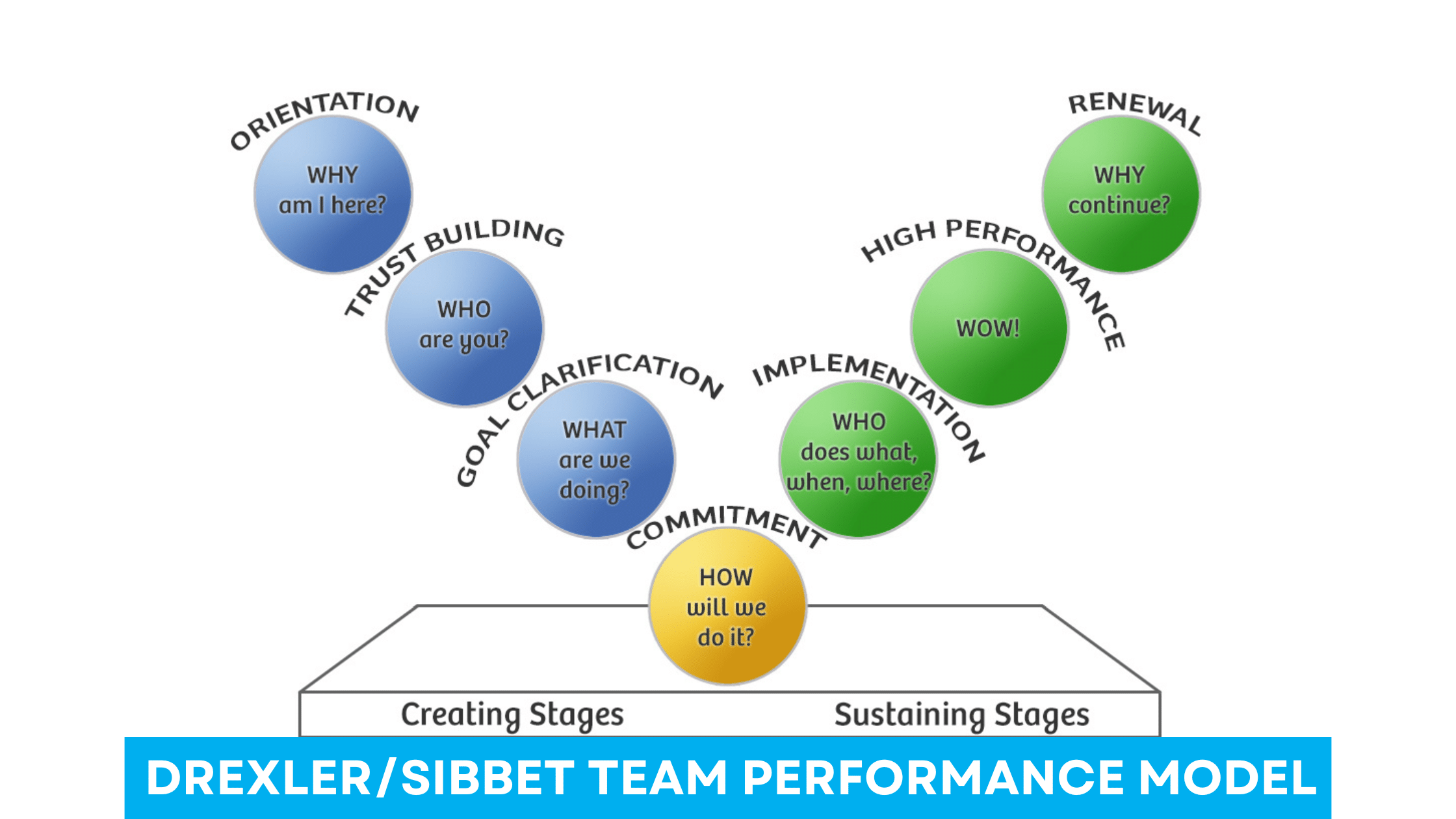Understanding Cultural Dimensions
Cultural dimensions help to explain how values and beliefs differ across the world. These concepts are essential for anyone navigating global regions like LATAM, AMER, EMEA, and APAC.
Understanding cultural differences can improve communication and foster better relationships.
Dimensions of Culture
Cultural dimensions help explain how different cultures prioritize various aspects of life. Geert Hofstede’s model is one of the most well-known frameworks in this field. He identified six dimensions, but the focus here will be on three significant ones. These are Individualism vs. Collectivism, Power Distance, and Hierarchy.
Each dimension represents a spectrum, showing how cultures deal with issues like authority, societal roles, and personal versus collective interests.
Businesses often use these dimensions to shape strategies and communicate effectively in diverse regions.
Individualism vs. Collectivism
This dimension looks at the extent to which people in a culture prioritize individual goals over group goals. In individualistic cultures, personal achievement and independence are highly valued. People tend to see themselves as separate from the group.
Conversely, collectivist cultures focus on group harmony and cooperation. They emphasize family and community, expecting loyalty and responsibility towards these groups.
Understanding where a culture falls on this spectrum is crucial for effective interaction. It assists in predicting how people might work together, make decisions, and respond to conflicts.
Companies need to adapt their management styles and motivation strategies accordingly, fostering environments where either independence or teamwork is encouraged.
Power Distance and Hierarchy
Power distance refers to how societies handle inequalities and the distribution of power. In cultures with high power distance, hierarchy is deeply entrenched. There is respect for authority, and subordinates accept directives without much questioning. This is common in many parts of Asia and Latin America.
In contrast, low power distance cultures, often found in Western countries, promote equality. There is open communication, and authority figures are more approachable. People expect to participate in decision-making processes.
Understanding these differences is vital for managing expectations and avoiding misunderstandings. Businesses need to tailor their leadership approaches to suit these cultural norms, respecting local customs while maintaining effective operations.
Communication Across Cultures
Effective communication across different cultures requires understanding both verbal and non-verbal aspects. Awareness of cultural variations in speaking styles and body language is crucial.
Each culture has unique ways of expressing ideas, emotions, and expectations. To succeed in international interactions, it’s important to respect and adapt to these differences.
Verbal Communication Styles
Verbal communication styles can differ greatly between cultures. In some cultures, such as those in North America, direct communication is valued. People often appreciate clear and straightforward speech. They may find indirect communication confusing or even frustrating.
In contrast, many Asian countries favor indirect communication, where subtlety and tact are key to maintaining harmony and respect in conversations.
Active listening plays a significant role in managing these differences. By demonstrating genuine interest and paying attention, one builds trust and encourages open dialogue.
Recognizing and respecting different speaking styles facilitates better understanding and collaboration. Tailoring communication to the audience’s preferences ensures messages are both received and valued.
Non-Verbal Communication and Cues
Non-verbal cues, including gestures, facial expressions, and eye contact, hold varied meanings across cultures.
In Latin America, closer personal space and frequent touching may signal warmth and engagement. On the other hand, cultures like Japan value greater personal space, and excessive physical contact may be viewed as intrusive or disrespectful.
Eye contact also differs significantly. In Western cultures, it often indicates confidence and honesty. Meanwhile, in some Asian cultures, prolonged eye contact can be seen as confrontational.
By appreciating these non-verbal signals, one enhances communication effectiveness and aligns with the cultural norms of the region being engaged with.
Business Etiquette and Practices
Understanding business etiquette and practices in different regions is crucial for building successful international relationships. From greeting styles to exchanging business cards and negotiation techniques, acknowledging these differences can enhance mutual respect and productivity.
Meeting and Greeting
In international business, greetings vary widely between cultures. In Japan, a polite bow is customary, reflecting respect, whereas in the United States and the UK, a firm handshake is a standard greeting. Understanding these differences is essential.
In Latin America, greetings often include a hug or a light kiss on the cheek, especially in more personal situations. Such differences can impact initial perceptions, making it important to be mindful of the local customs. Recognizing these nuances sets a positive tone for future interactions.
Exchange of Business Cards
The exchange of business cards holds significant importance in many cultures and is often a formal ritual. In both Japan and China, handing over your card with both hands shows respect and acknowledgment of the other person’s importance. It’s also essential to receive the card respectfully, taking a moment to read it before putting it away.
Europeans typically take a more casual approach, and in the United States, cards are exchanged with a firm handshake. Keeping your cards in pristine condition is a good practice everywhere. Using a cardholder emphasizes the importance you place on your connections.
Negotiation Styles
Negotiation styles also differ globally, influenced by cultural values and business norms.
In Latin America, business negotiations often involve building strong personal relationships before delving into formal discussions. Patience is key during these interactions, as decisions may take longer.
In contrast, North American styles typically lean towards direct and quick negotiations, focusing on facts, figures, and results. European styles may diverge; northern regions might prioritize efficiency, while southern regions value relationship-building.
Understanding these styles helps tailor approaches effectively, aligning strategies with cultural expectations for fruitful outcomes.
Social Interaction and Behavior
Understanding cultural differences is key to navigating social norms in various regions. Learning about public behavior, personal space, and appropriate dress in LATAM, AMER, EMEA, and APAC regions can ease interpersonal interactions and enhance respect across cultures.
Public Behavior
In LATAM, social interactions are warm and friendly. People tend to greet with a hug or a kiss on the cheek. In business settings, a firm handshake is standard. In contrast, in AMER, handshakes are the norm for both personal and professional interactions, signaling confidence and friendliness.
In EMEA, public behavior varies greatly. For example, in Southern Europe, people often engage in close physical contact like kisses on cheeks. In the Middle East, greetings may include a hug between the same gender but not between opposite genders.
In the APAC region, public behavior leans towards formality. Bowing is common in countries like Japan and South Korea. A slight nod or bow in addition to a handshake, shows respect. Knowing these nuances helps in making a positive impression.
Understanding of Personal Space
Personal space expectations differ widely. In LATAM, people stand closer during conversations, reflecting the region’s sociable culture. This closeness is seen as friendly and welcoming. In AMER, personal space is larger, especially in professional settings. People usually maintain an arm’s length distance during exchanges.
In various parts of EMEA, personal space ranges significantly. In Northern Europe, there’s a preference for more personal space, while Southern Europe might feel more comfortable with closer proximity. This reflects the cultural differences within the region.
In APAC, respect for personal space is significant. People often adhere to formal distances in social and business environments. For instance, in Japan, maintaining a respectful distance is a sign of politeness.
Dress Codes in Different Cultures
LATAM culture often blends formality with vibrant, expressive styles. For formal events, dressing in business attire is a standard practice. Bright colors and stylish cuts are appreciated in non-professional contexts.
In AMER, business casual has become a widely accepted standard. However, it’s essential to understand the specific dress codes of different organizations and events. Formal business meetings usually require suits or dresses.
In EMEA, dress codes can vary. In Western Europe, formal and elegant attire is typical for business. Middle Eastern countries often have more conservative expectations, especially for women, requiring modest dress. In APAC regions, dressing appropriately often means erring on the side of conservatism and focusing on neatness and respectability.
Dining Etiquette and Hospitality
Understanding dining etiquette and hospitality can greatly enhance social interactions. This includes knowing the correct table manners, being adept at offering and receiving hospitality, and appreciating regional food customs.
Table Manners
Table manners can vary greatly across different regions. In many places, such as EMEA, it is common to keep one’s hands on the table during meals, yet in the U.S., it’s polite to keep hands in the lap unless actively eating. Always chew with your mouth closed and avoid talking while eating to reflect courtesy.
In some cultures, leaving a small amount of food on the plate signifies satisfaction, while in others, finishing your meal may indicate enjoyment. Knowing these subtleties can prevent misunderstandings and show respect for diverse dining traditions.
Offering and Receiving Hospitality
Hospitality customs also differ widely. In Latin America, guests might be offered refreshments upon arrival, and it’s polite to accept, even if it’s a small amount. In some APAC regions, presenting small gifts when visiting a home is a sign of respect.
In the U.S., it is common practice to bring a dish or a bottle of wine when receiving hospitality. Learning to navigate these customs can make social gatherings more enjoyable and meaningful. It’s crucial to show appreciation by expressing thanks, either verbally or through a thank-you note.
Regional Food Customs
Regional food customs reflect deep cultural histories. In LATAM countries, meals are often seen as shared family experiences, emphasizing togetherness and conversation. In many Asian cultures, like Japan, it is customary to remove shoes before entering a home, often a sign of respecting cleanliness and comfort.
Middle Eastern countries might serve a communal dish from which everyone partakes, so using the right utensils or fingers is important. Knowing that eating and drinking with the right hand is customary in some EMEA regions can prevent faux pas. These insights into regional customs allow one to enjoy diverse culinary traditions respectfully.
Navigating Sensitive Topics
When dealing with different cultures, it is crucial to have cultural awareness and sensitivity. Understanding and respecting cultural taboos can help foster better communication and avoid misunderstandings across regions like LATAM, AMER, EMEA, and APAC.
Religion, Politics, and Personal Matters
Religion and politics are sensitive areas that can vary greatly between cultures. For instance, discussing religious beliefs might be acceptable in some regions but taboo in others. Political opinions are also fraught with sensitivities.
In LATAM and AMER, heated debates over politics can occur, but in APAC and EMEA, these discussions might warrant caution to avoid offense. Approaching these topics with neutrality and respect is advised, particularly in professional settings.
Personal matters such as family values or traditions can be sensitive and deeply ingrained in some cultures. In EMEA, respect for elders is an important tradition, and questioning this hierarchy may be seen as disrespectful.
Gender Roles and Expectations
Gender roles can be complex and differ significantly across cultures. In some APAC countries, traditional gender roles might still dominate, influencing expectations in work environments and social interactions. In contrast, AMER might showcase more progressive attitudes towards gender equity, but biases can still exist.
In LATAM, machismo might affect gender dynamics, affecting communication and collaboration. EMEA nations can vary widely, with some excelling in gender equality and others holding onto traditional expectations.
Mastering Cultural Do’s and Don’ts
Understanding cultural norms can enhance communication and respect across different regions. It is crucial to know the significant gestures and how public displays of affection vary around the world to avoid misunderstandings.
Gestures and Body Language
Gestures can mean different things depending on where you are. For instance, in some Latin American countries, a thumbs-up is seen as a positive sign. However, in parts of the Middle East, it might be considered offensive. Similarly, pointing with a finger can be impolite in some Asian cultures. Using an open hand is usually more acceptable.
Maintaining eye contact is another gesture with varied meanings. In European countries like Germany, it is a sign of confidence and honesty. On the other hand, in some Asian cultures, too much eye contact can be interpreted as aggressive or disrespectful. Always observe how locals interact to avoid unintentional rudeness.
Public Displays of Affection
Public displays of affection can range from simple hand-holding to kissing, and their acceptability varies greatly.
In many Western countries, it is common to see couples holding hands or even kissing in public. However, in several Asian and Middle Eastern countries, such displays are often frowned upon and sometimes prohibited.
In some South American cultures, affection among friends, like a friendly cheek kiss, is routine. Yet in Japan, public displays of affection, even between married couples, are rare.
It’s important to be mindful of these differences to show respect and avoid discomfort for locals and oneself.
Embracing Diversity and Inclusion
Creating an inclusive environment in global cultures like LATAM, AMER, EMEA, and APAC involves respecting diverse perspectives and fostering mutual respect.
Understanding cultural diversity is key to building strong cross-cultural relationships.
Diversity in the Workplace
Promoting diversity in the workplace enhances creativity and problem-solving.
Companies should actively recruit individuals from different backgrounds to include a mix of genders, races, and cultures. This mix leads to a variety of perspectives and ideas.
Training programs focusing on cultural awareness can help employees appreciate differences.
These programs should highlight the benefits of diversity, showing how varied viewpoints can improve team performance. Encouraging dialogues among colleagues from diverse backgrounds builds understanding and reduces biases.
Commitment to diversity requires policies that prevent discrimination and promote equal opportunities.
It is essential to monitor progress and set specific goals to ensure diversity is reflected in leadership roles.
Inclusion in Social Settings
Creating an inclusive environment in global cultures like LATAM, AMER, EMEA, and APAC involves respecting diverse perspectives and fostering mutual respect.
Understanding cultural diversity is key to building strong cross-cultural relationships.
In some South American cultures, affection among friends, like a friendly cheek kiss, is routine. Yet in Japan, public displays of affection, even between married couples, are rare.
It’s important to be mindful of these differences to show respect and avoid discomfort for locals and oneself.
Global Language Proficiency
Mastering language proficiency in international business involves understanding the local language and overcoming barriers that arise.
These elements play a crucial role in fostering successful communication and collaboration across different regions.
Importance of Local Language
Grasping the local language is essential for businesses operating in diverse markets like LATAM, EMEA, and APAC.
It enhances communication by allowing company representatives to connect more effectively with clients and partners. Clear communication can lead to stronger relationships and fruitful negotiations.
In regions such as the EU, speaking the language helps in understanding cultural nuances.
This is important for making a good impression and showing respect for local customs. Companies that invest in language training often find it easier to establish trust and build long-term partnerships.
Businesses that promote the use of the local language are more adaptable. They can quickly respond to market needs and opportunities, giving them a competitive edge.
Language Barriers in Business
Language barriers can hinder progress in global markets.
They might lead to misunderstandings and mistakes, affecting operations and customer satisfaction. For example, in regions like the AU or EU, language diversity is significant, and failure to navigate it can impact business dealings.
Real-time translation tools driven by AI can help bridge these barriers.
These tools allow businesses to communicate effectively without language acting as a hurdle. This accessibility opens doors to more prospects and enables firms to tap into global talent pools.
Addressing language barriers not only improves comprehension but also fosters a multicultural work environment.
By valuing communication skills, companies can boost teamwork and ensure smoother cross-border collaborations.
Regional Cultural Highlights
Understanding cultural norms in various regions can help guide business interactions and foster positive relationships.
This section highlights key aspects of cultural etiquette and social interactions across different global regions.
Latin America (LATAM)
In Latin America, personal relationships are essential in business. People often value trust and familiarity, which means that taking time to build rapport can be crucial.
Social interactions are typically warm and informal, with a preference for face-to-face communication. Greetings often include a handshake or a kiss on the cheek.
Business meetings may start with small talk, as personal connections are prioritized over immediate task-oriented discussions.
Respect for hierarchy is important, but decision-making can be collective. Understanding regional nuances, such as the formality of Brazil compared to the casual nature of Argentina, is beneficial. Emphasizing patience and adaptability can aid in navigating LATAM’s diverse cultural landscape.
North America (AMER)
North American business culture is often more direct and task-oriented than other regions. Efficiency and punctuality are highly valued, with meetings usually starting on time and focusing quickly on the agenda. In social interactions, a firm handshake is a common greeting.
Individualism is a strong cultural norm in North America, which influences how businesses operate. Emphasizing personal achievements and self-reliance is common.
Open and clear communication is favored, and there is generally a low tolerance for ambiguity. While work is important, there is also an increasing emphasis on work-life balance.
Europe, the Middle East, and Africa (EMEA)
The EMEA region is culturally diverse, with significant variations in social interactions and business etiquette.
In Europe, punctuality and professionalism are typically emphasized. A formal handshake is the usual greeting, though familiarity sometimes allows for more personal greetings like cheek kissing.
In the Middle East, personal relationships and trust are pivotal. Business discussions often start with extended socializing.
Hierarchical structures are respected, and decision-making might involve multiple levels of authority. In Africa, community and relationship-building are key, often with a strong oral culture influencing communication styles.
Asia-Pacific (APAC)
The Asia-Pacific region encompasses a wide range of cultures, each with its own etiquette and social norms.
In general, respect for hierarchy and seniority is vital. Bowing is common in places like Japan, while a slight nod or handshake is usual elsewhere.
Business is often conducted with a focus on harmony and consensus. Direct confrontation is usually avoided, and meetings might not always result in immediate decisions.
In APAC, understanding non-verbal cues is crucial as they can be as important as spoken words. Being mindful of saving face and showing respect is an important part of interacting in this region.
Intercultural Communication Strategies
Effectively navigating global cultures requires a keen focus on communication. Embracing active listening and empathy paves the way for meaningful connections while building bridges fosters understanding across diverse backgrounds.
Active Listening and Empathy
Intercultural communication thrives when individuals practice active listening.
This involves truly focusing on the speaker, which demonstrates respect and aids in cross-cultural communication. It helps one understand various perspectives, promoting mutual respect. To improve this skill, listeners should maintain eye contact and refrain from interrupting.
Another key aspect is empathy. Understanding and acknowledging others’ emotions can ease cultural differences.
When communicating, one should use empathetic language, like “I understand” or “That must be challenging.” Empathy forms a foundation that supports diverse teams in thriving together.
Building Bridges Across Cultures
Creating bridges between cultures involves more than just understanding language. It includes appreciating different communication styles, customs, and values.
Individuals should strive to learn and respect cultural norms, such as greetings or discussion etiquette.
In the workplace, encouraging a multicultural dialogue environment is beneficial.
This can involve using strategies like inviting input from all team members and considering varied cultural viewpoints. When these connections are built thoughtfully, they enhance cooperation and create a more harmonious setting.
Building trust through transparent communication is also critical.
When addressing any cultural misunderstandings, clear communication can prevent conflicts and strengthen relationships across diverse groups.

Conclusion
Understanding cultural nuances is crucial when operating in different regions like LATAM, AMER, EMEA, and APAC. Each region presents unique challenges and opportunities shaped by its cultural, economic, and political landscape.
LATAM is known for strong relational networks. Building trust and forming personal connections are important.
C-suite leaders here have noted a shift in the role of the CMO, emphasizing its growing influence over data-driven strategies. More details about these dynamics can be found in the regional report on B2B marketing trends.
AMER encompasses North, Central, and South America, making it quite diverse.
Successful interactions require adaptability to various cultural norms and business practices across countries within this region. More information about these regional distinctions can be explored in an article defining business region acronyms.
For EMEA, sensitivity to a wide range of cultures, languages, and business etiquette is vital.
This region covers Europe, the Middle East, and Africa, which brings a complex array of variables to the business landscape. Grouping these parts logically can help narrow the focus, as explained in the international strategy guide.
APAC is marked by rapid technological advancement and high economic activity. Understanding the cultural diversity and economic dynamics of countries like China, Japan, and India is key to success here.Insights into these characteristics are detailed in a business region guide.



